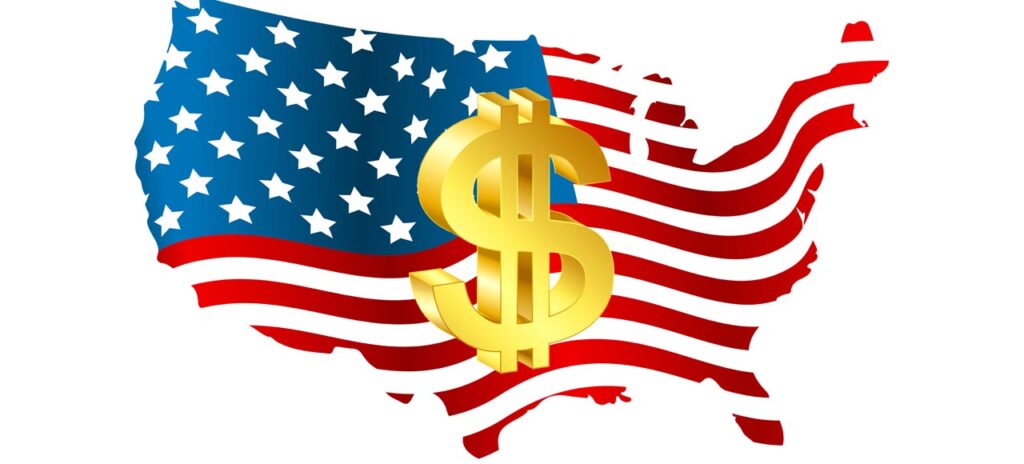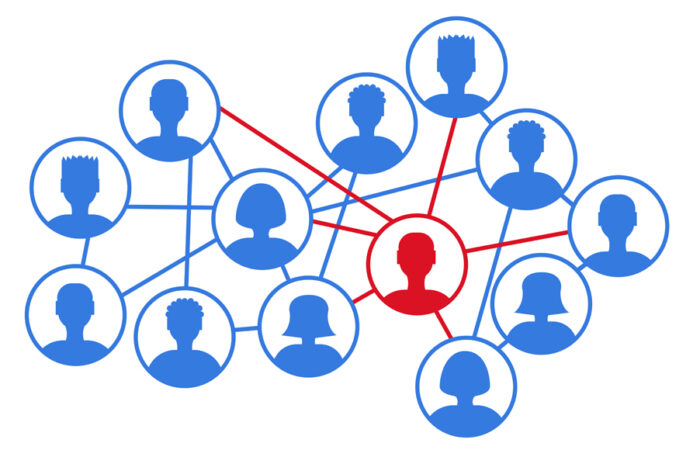
*By Nathaniel Mathew*
The year was 1883. It was to be the event of the year, maybe even of the century. The Vanderbilt’s had just moved into their Fifth Avenue French Chateau style home and decided to throw a party to get to know the elite of New York. Ornately dressed man servants personally delivered invitations to the who’s who of New York’s High Society for the fancy-dress ball. One lady came dressed in a devil’s costume, another with a stuffed dead cat on her head and cat’s tails trailing from her dress, still another wore a battery-operated dress with a torch that shone at the end. An astounding six million (equivalent value in 2020) [1] was spent on the day. As the festivities kicked off, the police had their hands full in trying to contain the throngs of poor commoners dying to catch a glance of rich extravagance!
This was a scene from America’s gilded past, a period that extended from 1870 to 1990 when the railroads connected the far-flung parts of America, industrialization boomed, and thousands of migrants thronged to the city for work. It was a time when debauchery was at its fashionable highest, and the rich reeked of rumbustious excess. It was also a time of extortion, hijacked rights, and deprived working conditions. In a way, it was the best of times, but it was also the worst.
Somehow, this image doesn’t shock you as much as it should, does it? It just seems like a normal day in 21st Century “glamourous” America where the rich continue to mindlessly splurge on superfluous pursuits while the poor struggle with hunger, low wages, and nearly non-existent support systems. On closer inspection, it would not be wrong to presume that America, for all it’s portrayed fairness and propagation of the American dream for the masses, has fallen off its moral high horse into the imploding blackhole of its gilded past. Today, in 2020, America is getting wrapped in gold again, but only the top one percent of billionaires!
Mark Twain once said, “History doesn’t repeat itself, but it often rhymes.” His astute observation could not have summed up the situation any better. Incidentally, ‘The Gilded Age’ was coined based on the book ‘The Gilded Age: A Tale of Today’, a satirical take on the greed and corruption that plagued America in the late nineteenth century. The book was authored by Mark Twain and his close friend Charles Dudley Warner.
As the term ‘gilded’ dictates, the times were duplicitous with co-existing rapid industrial growth and meagre wages; political polarization and public upheavals; opulent excess and stark hunger; overt philanthropy and incessant greed. It was a time when America shone as an industrial power before the nations while it’s insides rotted with the cancerous decay of poverty, corruption, racism, and wealth disparity. That a similar age, if not a parallel, should befall American history a mere hundred years later with a telling Belle Epoque [2] as proof is quite unfortunate. It can easily be foreseen, mirrored in 21st century America’s fate, a time of deep unrest as witnessed by its parallel in the late 19th century.
The Political Clout of Overbearing Moneybags
Perhaps one of the most distinct parallels between the two ages is the ability of the pillars of great wealth to bend and twist democracy in their favor. Industrialists openly spent money on and supported political representatives in return for favors once elected. They used their clout to lobby lawmakers into enforcing policies that were decidedly in favor of their big corporations while the gullible public who voted for the representatives got the short end of the stick. And when that wasn’t enough to satiate their ravenous greed, they turned to corruption of massive scale resulting in some of the most infamous political scandals America has ever known. One such scandal is the Credit Mobilier scandal where exorbitantly inflated contracts were awarded in the name of building the transcontinental railroad. [3]
In 1905, when Congress passed the railroad regulation bill, the railroads fought back with arguments that, “disaster would follow if the government ‘should meddle’ in the complex business of network decisions.” They insisted that, “The laws already on the books were sufficient to deal with any difficulties.” [4]

This 1889 cartoon sketched by Joseph Keppler and titled ‘The Bosses of the Senate’ clearly depicts the power corporations of the Gilded Age held over lawmakers. (Credit: Public domain.) The monopolists were pictured as giant ready-to-burst moneybags while the miniature senate members were seen to labor and languish under their dominant gaze. On closer inspection, you will see the people’s entrance to the senate to be barred and inaccessible.
Fast forward to the 21st Century and the situation is no different. If the industrialists dictated the terms back then, today it’s the technologists. Infringement on digital privacy is a real and pressing problem faced today. Information age giants have thus far flourished at the expense of neglect in enforcement of the common man’s right to privacy. Google, Facebook, Instagram all provide free tools for the masses to use. But their generosity masks a vile, sinister, ulterior motive of selling as a commodity one of the most valuable resources on the planet today – your digital footprint. Your words, clicks, right down to the very pauses you take are monitored and stats are created to map activities, determine patterns, and manipulate behavior for the benefit of monolithic monopolistic mega-corporations. [5]
According to a survey conducted in 2017, 70 percent of Americans lack confidence about the safety and privacy of their personal data. [6]
The introduction of the concept of the Open Internet Rule by the Obama Administration can be seen as an echo of the railroad regulation bill of 1905. However, before the bill could come to fruition, it was nonchalantly dismissed in a swooping move by the Trump Administration. Donald Trump chose as the FCC Chairman the commission’s strongest vocal opponent resulting in a 3 to 2 vote against the Open Internet Rule.
More than simply repealing the existing Open Internet Rule, the FCC—the federal agency created to oversee the public interest obligations of essential electronic networks—walked away from its responsibility, claiming it had no authority, and asserting the Federal Trade Commission (FTC) could act if anything untoward were to happen. [7] They essentially echoed the same sentiment voiced by the industrial barons of the Gilded Age – the existing laws are sufficient to deal with any difficulties.
Political Polarization of Public Opinion
The similarities, however, don’t end there. Jack Beatty, author of ‘Age of Betrayal’ (a complete analysis of the Gilded Age) observed that, “a student of the Gilded Age confronts a mystery…what reverse alchemy transformed mass enthusiasm [built around specific political issues] into policies disfavoring the masses?” His answer to this malady was the “politics of distraction.”[8]
According to Beatty’s research, political parties of the Gilded Age swung public votes in their favor through “sectional, racial, cultural, and religious cleavages to win office. Then [they] turned government over to the corporations.” [9] Pressing public issues were isolated and targeted to win over mass favor. However, once in power, the promises to the masses were conveniently forgotten.
The new Gilded Age in American history is no different. The only twist in the plot is that the politics of distraction is now driven by powerful digital algorithms that function through popular social media platforms. They operate through the segregation of masses, based on their interests, ethnicity, gender, political views, religious preferences and much more, to target carefully crafted messages intended to elicit a desired reaction. [10] Social media communities are now commodities that make the unaware public sitting ducks for the wily schemes of politicians.
It is now no secret that the 2016 United States elections were won riding on the mammoth wave of Cambridge Analytica’s strategy to micro-target US voters with psychographically prepared videos, blogs, images, infographics, and more that trashed public opinion about the Republican nominee across social media channels such as Google, Snapchat, Twitter, Facebook, and YouTube.

Targeted digital campaigns used by Trump Team during the 2016 Presidential Election. Source: Cambridge Analytica.
Here’s the catch: none of the techniques used by them were technically illegal. However, the fact that Cambridge Analytica acquired data of more than 50 million Facebook users to build their digital campaign that swayed the general elections in favor of a Trump government shows how gigantic and unchecked the issue is. [11]
The Dominant Canvas of Corporate Monopolies
The fight for power didn’t confine itself to politics. Back in the gilded days of the 19th century, the laws that governed the use of new technology were manned and spun by an elite handful of industrial tycoons to their advantage. Today, they have played into the hands of information barons.
As historian John Steele explains, this is “an old pattern in American economic history. Whenever a major new force—whether a product, technology, or organizational form—enters the economic arena, two things happen. First, enormous fortunes are created by entrepreneurs who successfully exploit the new, largely unregulated niches that have opened up. Second, the effects of the new force run up against the public interest and the rights of others.” [12]
The commodity under seize today is not a physical product like in the Industrial Age. It is the data profiles of millions of people stored behind securely vaulted digital walls. The more data a company has, the better they can target campaigns in favor of the highest bidder. Such exclusive monopolization of data ensures that no competitor can rise to challenge their status quo.
If John D. Rockefeller rocked the monopolistic canvas of the industrial times with Standard Oil, Google today dominates an astounding 86.86% of web search traffic in the whole world. [13]
The Dual Face of Wealth
During both the Industrial Age and the Information Age, America as a country grew wealthy. However, the wealth remained confined in the hands of a choice few while the majority of the population lived in poverty.
According to the documentary, the Gilded Age, by 1897, the richest 1% of the US (amounting to 4000 families) had nearly the same amount of wealth as the remaining 11.6 million families put together. In fact, in terms of property ownership, the lowest 44% combinedly owned a mere 1.1% while the ultra-rich 1% controlled 51% of ownership. [14] Industrial moguls like John D. Rockefeller and Andrew Carnegie and financiers like Jay Could and J. P. Morgan amassed fortunes of gigantic proportions.
Fast forward to the year 2017, a CNN analysis of Federal Reserve Data revealed that America’s top 1% wealthy collectively held 38.6% of the total nation’s wealth. In fact, the three richest individuals in the U.S. accounted for wealth equal to that owned by the bottom half of the population. [15]
Anti-Immigrant Sentiment
Bull economies are typically attributed to the watchful eyes of visionaries accelerated by conducive political and economic conditions. What remains forgotten is the toil of thousands and thousands of laborers and immigrants whose sweat forms the foundation of economic growth.
The Gilded Age included widespread pro-white and anti-immigrant movements. In 1882, the Congress passed the Chinese Exclusion Act to ban Chinese immigration. The act was primarily targeted at Chinese laborers, while students and businessmen continued to enter the country on a temporary basis. The Chinese within the country were treated like second class citizens and discouraged from venturing into the white-populated urban neighborhoods. They were forced to withdraw and settle in Chinatown districts of cities. This policy continued in effect till the 1940s. The Chinese were not the only victims of this unwritten exclusion policy. The US Army even unleashed plans to expel Native Americans from their ancestral lands in the name of barbarism and terrorism. But it was all a pretext to capture the natural resources available on their lands. [16]
The same attitude continues to the present day. President Donald Trump has been vilifying Mexican and Central American migrants from the launch of his 2016 campaign. Rants about building a wall to prevent further migration resounded throughout his Presidential campaign. He has even been successful in restricting immigration from seven countries with predominant Muslim population, namely Iran, Libya, Somalia, North Korea, Syria, Venezuela, and Yemen. [17]
Rights of the Oppressed
Brought into the mainland as slaves, African-Americans have always fought to be given equal rights. During the Gilded Age, African-American men were granted voting rights based on the 15th Amendment. However, they were swiftly disenfranchised through legal trickery and state-permitted violence. [18] Laws were enacted in Southern United States to enforce racial segregation. These were known as the Jim Crow laws.
Around a hundred and thirty years later, the Supreme Court altered the Voting Rights Act welcoming a new strata of low income voters of color. However, black voters with existing or previous criminal records were impeded from having voting rights. This decimated the black vote considerably.[19]
The Fair Sex for Fairness
Through the years, women have always found themselves in the unenviable position of having to fight for rights that indisputably should be theirs at birth. During the first gilded age, women were denied the right to vote. Women such as Susan B. Anthony, Elizabeth Cady Stanton, and Lucy Stone were instrumental in forming the first national suffrage organizations. [20] Their tenacity, moral rage, and sisterhood resulted in the 19th Amendment that granted women the right to vote on August 8, 1920.
Thanks to the hard work of strong women of the past, women today have far more legal rights and protective laws than before. However, the presence of these protective laws have not guaranteed women safety from harm. Despite having options to turn to authorities for help when faced with sexual harassment, most women don’t come forward owing to their fear of being stigmatized. The laws of the country may have changed, but the mindset of people hasn’t.
The #metoo movement, started by Tarana Burke in 2006, played a major role in bringing to light sexual harassment issues faced by women across the globe. What started as a small movement snowballed into an avalanche of me-too stories as women from differing socio-economic and cultural backgrounds openly shared their experiences on social media. The movement not only emboldened women to speak up and support each other, it also cast a light on the seriousness of the issue in modern times. As a result, several states in the US banned non-disclosure agreements that cover sexual harassment at the work place, more protective laws were enforced, and several survivors received financial restitution. [21] Above all, the cold glass veneer behind which men of power safely jeered, shattered to pieces. The invincible men of the workplace finally discovered that they were no longer untouchable.
What does the future hold?
The unbridled, power-driven, opulent nature of the first Gilded Age eventually went too far. Astounding uber richness co-existed with inhumanely devastating poverty until it was reigned in through public uprisings, labor strikes, and democratic political representatives that brought a surge of reform. Today, America finds itself at similar crossroads a mere hundred years later. It’s dirty past of sharp wealth disparity has once again reared its ugly head riding on the cusp of the growth-driven Information Age. To our benefit, we have history to learn from to mend our ways. But whether the internet-addicted generation of today be able to break free from elitist propaganda to recognize and overcome the inequality-ridden reality around them is yet to be seen.
References
- Kris Manty, “The Vanderbilt Ball of 1883,” Antique Trader, July 31, 2020. https://www.antiquetrader.com/collecting-101/the-vanderbilt-ball-of-1883
- Paul Krugman, “Why We’re in a New Gilded Age,” NY Books, May 8, 2014. https://www.nybooks.com/articles/2014/05/08/thomas-piketty-new-gilded-age/
- Edward T. O’Donnell, “Are We Living in the Gilded Age 2.0?,” History, Jan 31, 2019. https://www.history.com/news/second-gilded-age-income-inequality
- Doris Kearns Goodwin, The Bully Pulpit: Theodore Roosevelt, William Howard Taft, and the Golden Age of Journalism, Simon & Schuster, 2013, p. 448.
- Renee Boucher Ferguson, “Is Digital Advertising a New Form of Market Manipulation?” September 24, 2013. https://sloanreview.mit.edu/article/is-digital-advertising-a-new-form-of-market-manipulation/
- Bree Fowler, “Americans Want More Say in the Privacy of Personal Data,” Consumer Reports, May 18, 2017. https://www.consumerreports.org/privacy/americans-want-more-say-in-privacy-of-personal-data/
- John Steele Gordon, “Regulators Take On Silicon Valley, as They Did Earlier Innovators,” The Wall Street Journal, April 17, 2018. https://www.wsj.com/articles/regulators-take-on-silicon-valley-as-they-did-earlier-innovators-1524005477.
- Jack Beatty, Age of Betrayal, Vintage Books, 2008, p. 221.
- Ibid
- Tom Wheeler, “Who makes the rules in the new Gilded Age?” Brookings, December 12, 2018. https://www.brookings.edu/research/who-makes-the-rules-in-the-new-gilded-age/
- “Leaked: Cambridge Analytica’s blueprint for Trump victory,” The Guardian. https://www.theguardian.com/uk-news/2018/mar/23/leaked-cambridge-analyticas-blueprint-for-trump-victory
- John Steele Gordon, “Regulators Take On Silicon Valley, as They Did Earlier Innovators,” The Wall Street Journal, April 17, 2018. https://www.wsj.com/articles/regulators-take-on-silicon-valley-as-they-did-earlier-innovators-1524005477.
- https://www.statista.com/statistics/216573/worldwide-market-share-of-search-engines/
- Lily Rothman, “How American Inequality in the Gilded Age Compares to Today,” Time, February 5, 2018. https://time.com/5122375/american-inequality-gilded-age/
- Ibid
- Gilded Age, Wikipedia, https://en.wikipedia.org/wiki/Gilded_Age
- David Huyssen, “We won’t get out of the Second Gilded Age the way we got out of the first,” Vox, Apr 1, 2019. https://www.vox.com/first-person/2019/4/1/18286084/gilded-age-income-inequality-robber-baron
- Ibid
- Ibid
- Rick Hampson, “America’s Second Gilded Age: More class envy than class conflict,” USA Today, May 17, 2018. https://www.usatoday.com/story/news/2018/05/17/americas-gilded-ages-then-and-now-and-how-they-differ/615185002/
- Anna North, “7 positive changes that have come from the #MeToo movement,” Vox, Oct 4, 2019. https://www.vox.com/identities/2019/10/4/20852639/me-too-movement-sexual-harassment-law-2019



